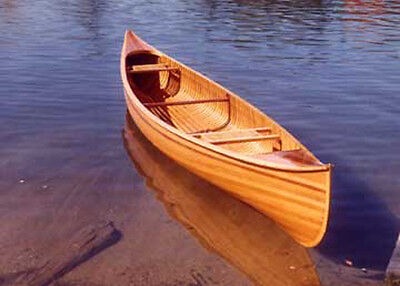Canoes are an immortal type of watercraft that play had a critical impact in human transportation, investigation, and diversion. Whether you’re coasting through quiet lakes or exploring tough waterways, Canoes offer a flexible and personal involvement in nature. In this article, we will investigate the different sorts of Canoes, their plan highlights, and the upsides and downsides of each, assisting you with better comprehension of these notable boats and their place in present day water sports.
Types of Canoes
Sporting Canoe Boats are intended for comfortable rowing on quiet waters like lakes, lakes, and sluggish streams. They are more extensive and more steady than different kinds, making them ideal for fledglings and easygoing paddlers. Their expansive body and higher sides give great strength, making it more straightforward to paddle, in any event, for individuals absent a lot of involvement. Flatwater rowing, road trips, family trips. Frequently produced using solid plastics like polyethylene or fibreglass. Generally situates 2-3 individuals with adequate room for gear.
Whitewater Canoes
Whitewater Canoe Boats are explicitly intended for unpleasant, quick waters. These Canoes are more flexible, with more limited lengths and higher rocker (ebb and flow from bow to harsh), which assists them with exploring rapids and tempestuous waters. Some whitewater Canoes accompany buoyancy packs for additional lightness. Stream rowing, whitewater boating. Normally produced using rough materials like Royalex or high-thickness polyethylene to endure influence.
Visiting Canoes (Undertaking Canoes)
Visiting Canoe Boats are long, smooth, and work for covering significant distances effectively. They are intended to follow straight through the water with insignificant exertion, making them ideal for long rowing campaigns. These Canoes offer a lot of room for gear, frequently highlighting higher sides for better water obstruction in more unpleasant waters like beachfront regions. Long outings, multi-day experiences, conveying weighty burdens, Lightweight composites like Kevlar or carbon fibre for simplicity of transport over significant distances.
Solo Canoes
Solo Canoe Boats are explicitly intended for one paddler. They are lighter and more modest, making them simpler to deal with alone. These Canoes are flexible, frequently utilised for sporting rowing, fishing, or solo endeavours. Their tight edge takes into account better speed and mobility. Solo outings, fishing, light visiting, Lightweight materials like fibreglass, Kevlar, or aluminium.
Hustling Canoes
Hustling Canoes are worked for speed. They are long, slender, and intended for cutthroat rowing. Because of their thin profiles, they are less steady yet very quick when rowed by experienced canoeists. Dashing Canoes are typically utilised in flatwater or long distance race races. Cutthroat rowing, hustling occasions, Carbon fibre or lightweight composites.
Configuration Highlights of Canoes
Gives magnificent beginning dependability, ideal for sporting rowing on quiet waters. Notwithstanding, it needs speed and can be trying to control in harsh water. Offers less introductory steadiness yet better by and large speed and mobility. Best for experienced paddlers or those exploring differing water conditions. Consolidates the best case scenario with moderate security and better mobility, settling on it a flexible decision for various rowing conditions.
Rocker
The “rocker” of a Canoe alludes to the ebb and flow of the frame from bow to harsh. Canoes with more rocker are more flexible however more slow, making them ideal for whitewater conditions. On the other hand, less rocker (a compliment structure) gives better following and speed to significant distance rowing in quiet waters. Give better following and are more proficient for covering significant distances, however they are more diligent to move. Simpler to turn and more responsive, ideal for whitewater or solo rowing. Offer greater dependability, making them extraordinary for amateurs or sporting paddlers. Speed up and make rowing simpler for significant distances, however they can be more challenging to adjust.
Materials
Tough and low upkeep however can be weighty and cold in cool climates. Lightweight and reasonable, yet less sturdy than different materials. Very lightweight and solid, ideal for long endeavours however more costly. Weighty yet reasonable and intense, ideal for sporting and whitewater rowing.
Advantages and disadvantages of Canoes
Canoes are appropriate for different water conditions, from quiet lakes to harsh streams. Most Canoes offer adequate space for gear, making them ideal for setting up camp excursions or long excursions. Canoeing is a calmer, more slow paced action that considers a more profound association with the normal environmental elements. Canoes are simpler for amateurs to utilise, especially sporting models with wide and stable structures. Contingent upon the material, Canoes can keep going for a long time with insignificant upkeep. Canoes are by and large slower than Canoes or mechanised watercraft, making them less reasonable for the individuals who need to rapidly cover significant distances. While sporting Canoes are novice cordial, more particular models (like whitewater or dashing Canoes) require insight and expertise.
Conclusion
Canoe Boats are a flexible and respected watercraft that offer something for each sort of paddler, from easygoing sporting clients to prepared travellers. Understanding the various sorts of Canoes, their plan highlights, and the upsides and downsides can assist you with choosing the right Canoe for your next experience, whether you’re setting out on a tranquil lake trip or exploring through testing whitewater. No matter what the sort, Canoes keep on furnishing an unparalleled encounter of concordance with the water and the regular world around you.
